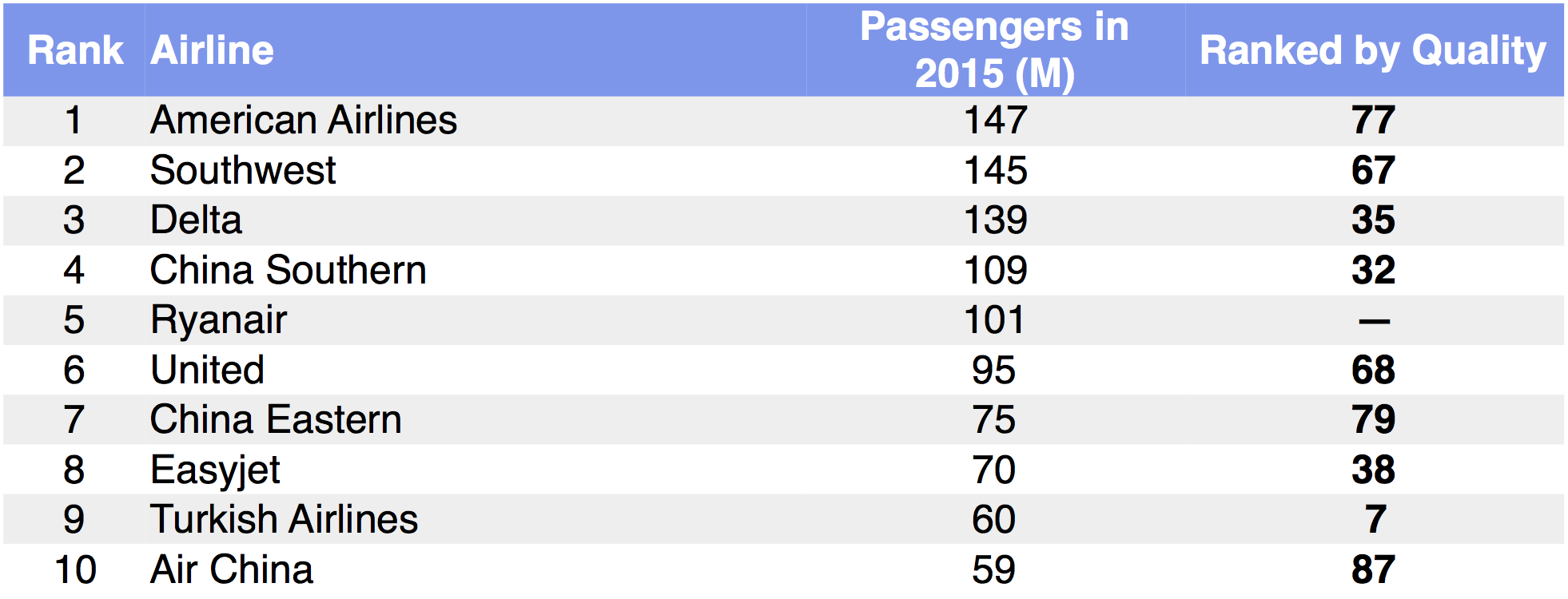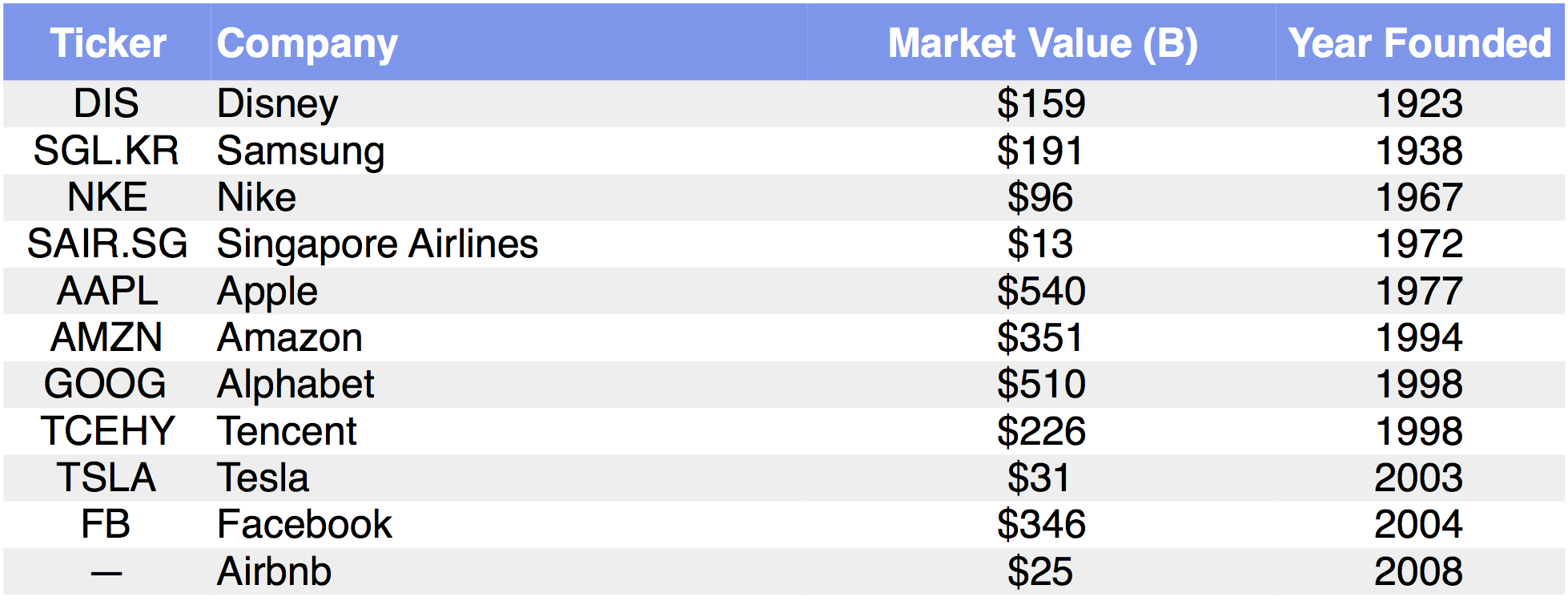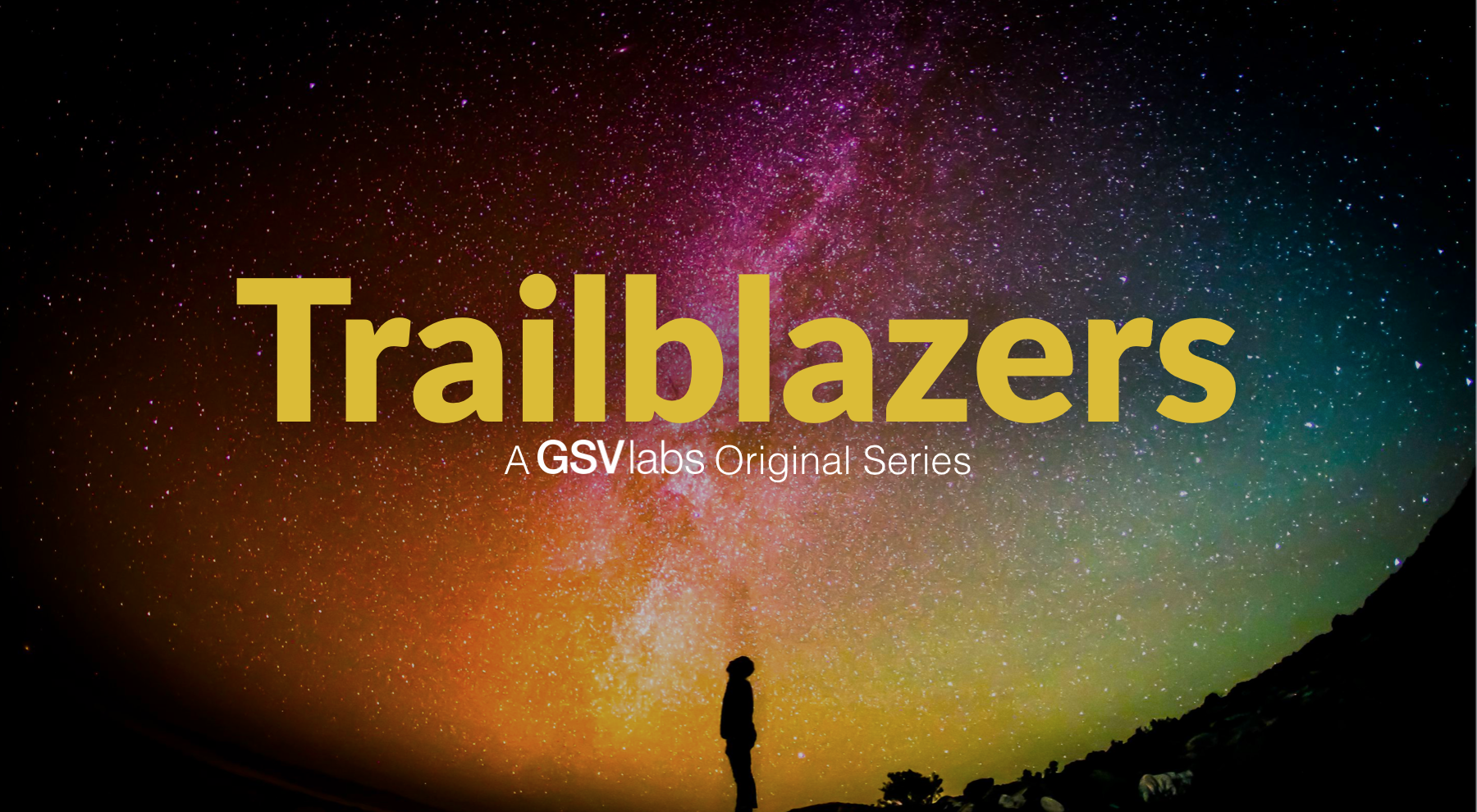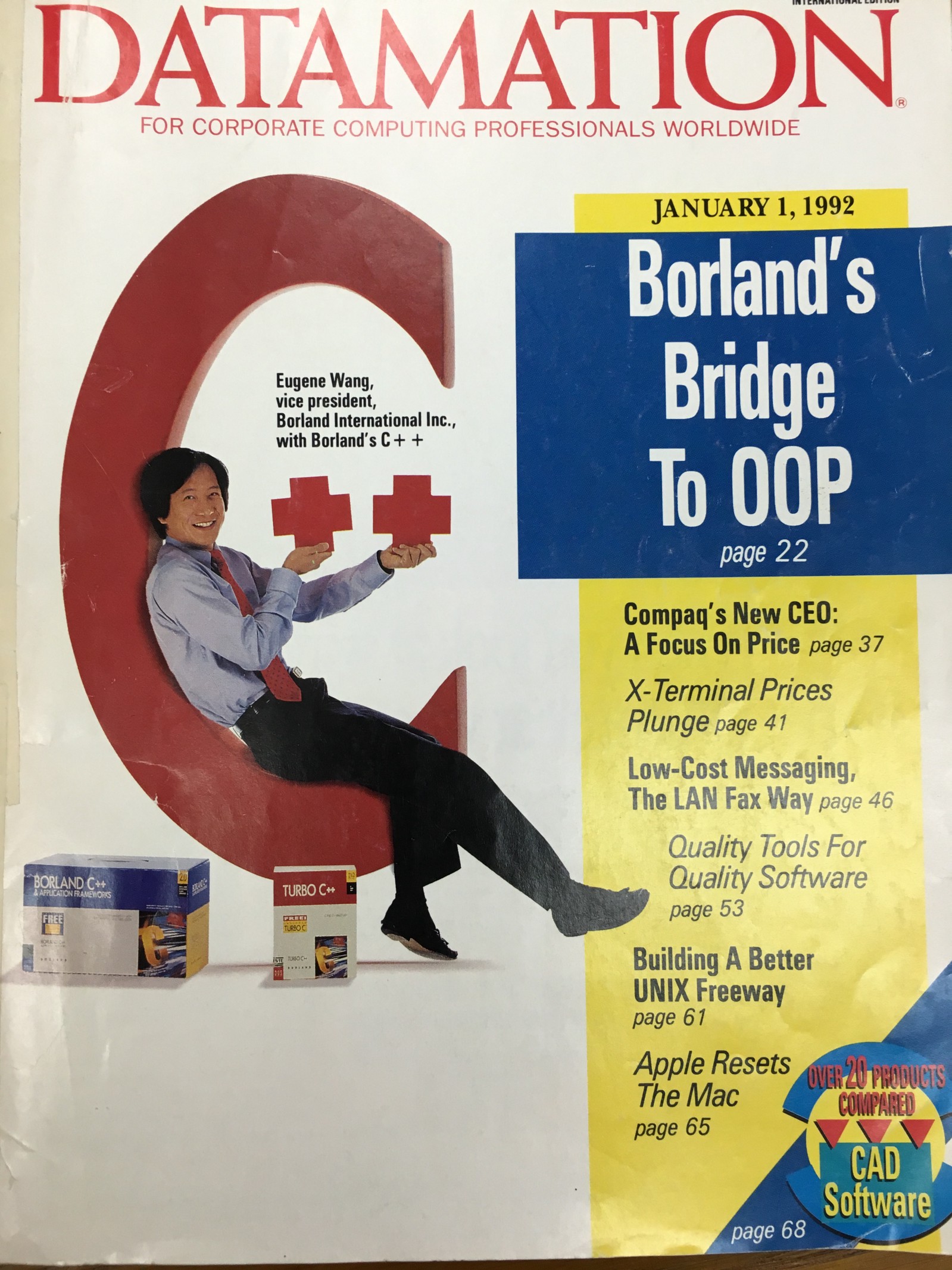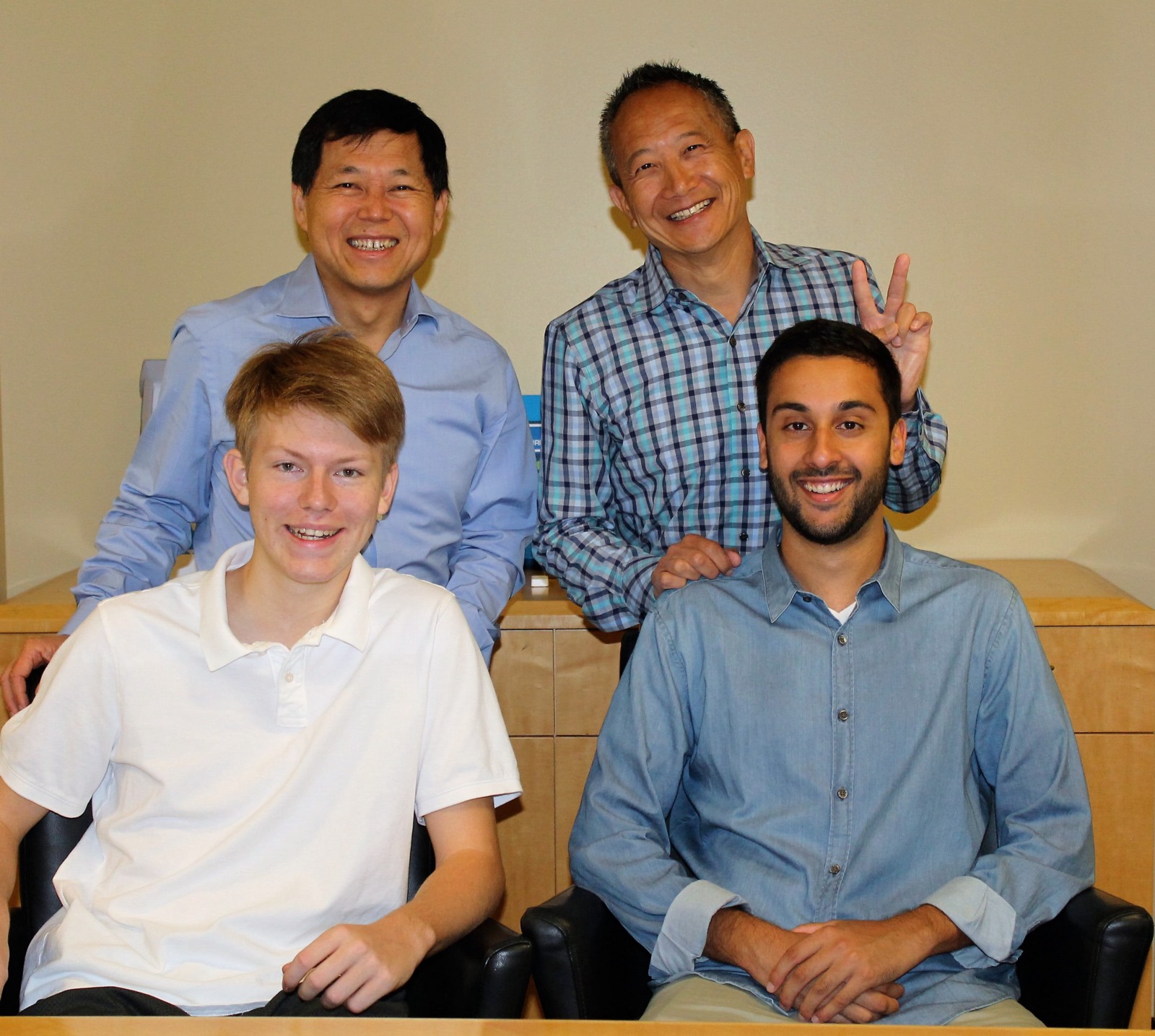Market Snapshot
| Indices | Week | YTD |
|---|
The greater danger for most of us lies not in setting our aim too high and falling short; but in setting our aim too low, and achieving our mark.
— Michelangelo
Some people see things that are and ask, Why? Some people dream of things that never were and ask, Why not? Some people have to go to work and don’t have time for all that.
— George Carlin
Where do big companies come from?
Just as trees don’t start as trees — they start as acorns — big companies don’t start as big companies… they start as small companies.
As a liquid, publicly traded stock, GSV Capital is a unique vehicle that enables public investors to access dynamic private companies like Spotify, Snapchat, Dropbox, Palantir and Lyft. As companies stay private longer, the opportunity to invest in emerging growth businesses has increasingly been limited to select venture capital firms and institutional investors. (Disclosure: GSV owns shares in Spotify, Snapchat, Dropbox, Palantir and Lyft)
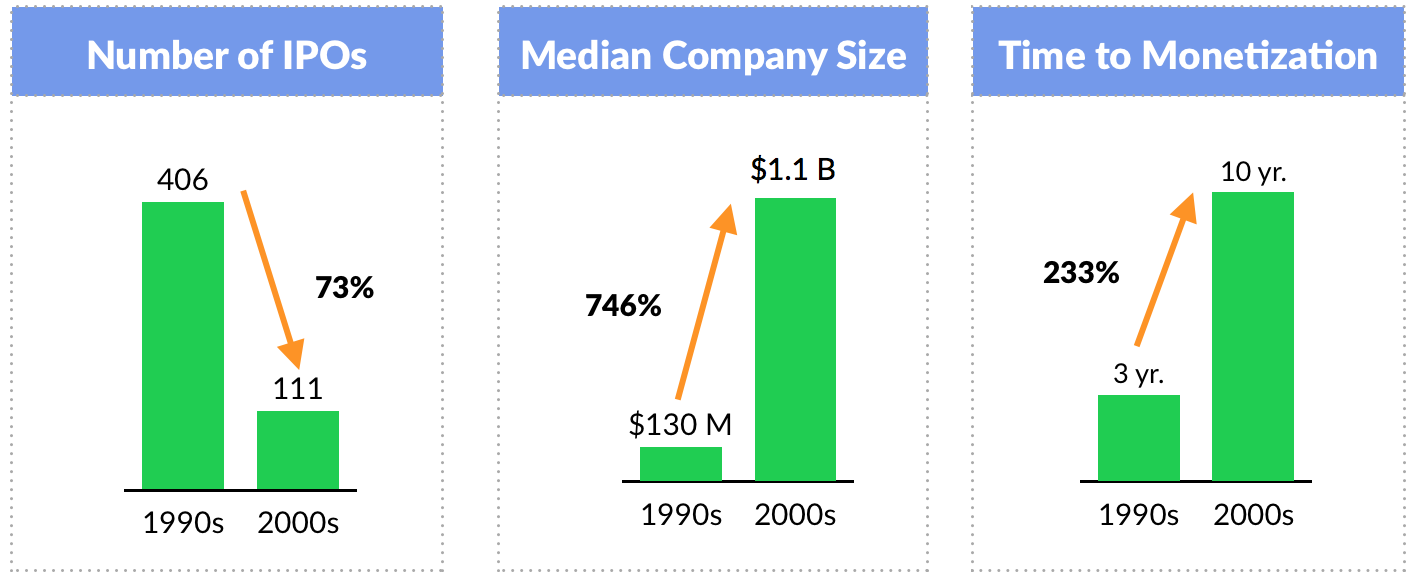
According to the National Venture Capital Association, from 1990 to 2000, there was an average of 406 IPOs in the United States per year. From 2001 to 2015, there has been an average of 111 IPOs. The time from initial Venture Capital investment to monetization has gone from an average of three years in 2000 to approximately ten years today.
We believe that growth drives enterprise value, and accordingly, our mission is to build a portfolio of rapidly growing, venture-backed private companies — the “Stars of Tomorrow”. What’s exciting to us is that innovation is accelerating. Some may quibble about appropriate values, but we’re very pleased with the value creation opportunity. (Click HERE to see my recent remarks on the state of play at GSVC from our annual Investor Day in June)

From September 14-15, GSVlabs — a global innovation center that is home to over 170 startups that GSV Capital owns 70%+ of — will host the second annual GSV Pioneer Summit. The objective of the Summit is to catalyze transformative ideas by bringing together visionary founders, investors, and leaders who are changing the world for good. It gives us a window to what’s next. It gives GSV a window to future opportunities and is a platform to accelerate investments we’ve made.
A fundamental screen we use to select presenting companies is to search for problems that require fresh thinking and solutions — the greater the problem, the bigger the opportunity. In 2016, the Summit will focus on five key themes, emphasizing bold and creative solutions for the “wicked” issues that plague societies the World over.
1. EXPONENTIAL MACHINES
How will artificial intelligence, robotics, augmented reality tools change global industries and society?
In 1965, Gordon Moore predicted that the number of transistors on an integrated circuit would double every two years. The effect of “Moore’s Law” is that computing power has doubled (or, costs have been halved) every two years for the past 50 years. Dramatic reductions in storage and computing costs have enabled the rapid rise of powerful new technology platforms, including Artificial Intelligence (AI).
The current frontier is “Deep Learning” — a process where computers “teach” themselves concepts and tasks by crunching large sets of data. It’s a way of getting computers to know things when they see them by producing rules that programmers cannot specify.
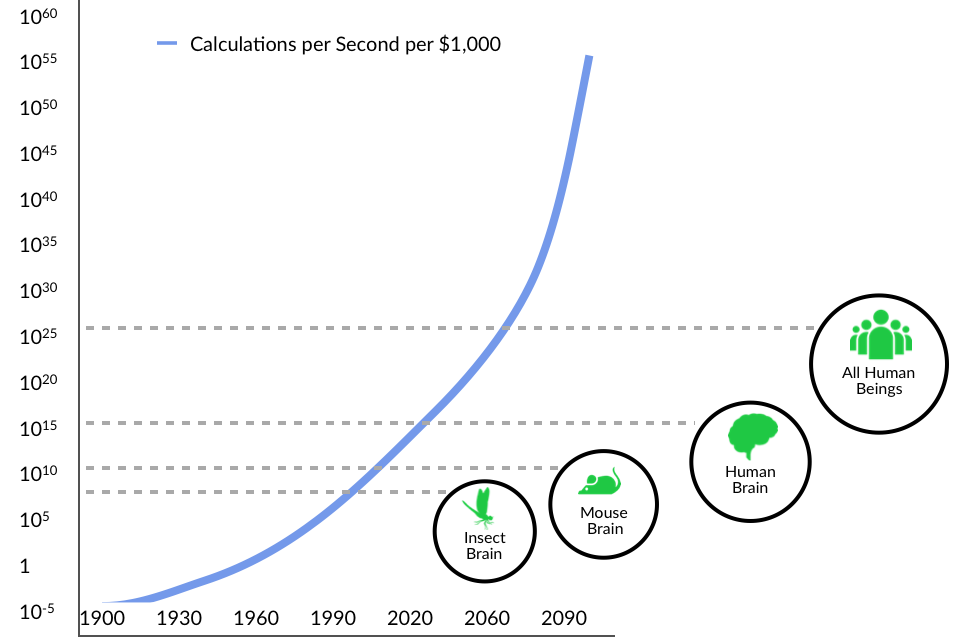
By working from the bottom up, Deep Learning algorithms learn to recognize features, concepts, and categories that humans understand but struggle to define in code. For these algorithms to work, they first must be “trained” with massive quantities of data inputs. For example, Facebook’s facial recognition algorithm, Deep Face — which can recognize human faces with 97% accuracy — was created by feeding computers with millions of images of faces.
Deep Learning and related AI technology has powerful commercial applications — particularly in the ability to create a personalized experience for people using a variety of apps and services.

Similarly, Virtual and Augmented Reality (AR/VR) has been promised since the 1950s, but the convergence of low-cost mobile hardware and powerful new software platforms is bringing it to life.
Oculus VR founder Palmer Luckey, a college dropout, created a Virtual Reality “prototype” in 2011 with a smartphone, two eyeglass lenses, duct tape, and a bucket. One year later, Luckey tried to raise $250,000 on Kickstarter and reeled in $2.4 million.
In 2014, Facebook bought his company for $2 billion and VR had seemingly arrived. At the time, Mark Zuckerberg observed, “Every 10 to 15 years a new major computing platform arrives — we think that virtual and augmented reality are important parts of this upcoming next platform.”
2. HUMAN RENAISSANCE
How will humans learn, work and live in an accelerating world and what technologies will help us educate leaders of the future?
Throughout history, whether in pre-industrial or industrial times, great nations developed based on their access to physical resources or their ability to surmount physical barriers. England and Spain crossed oceans, Germany turned coal and iron into steel, and the United States exploited a wealth of agricultural and industrial resources to become the World’s breadbasket and industrial superpower.
But the advent of the personal computer, the Internet, and the digital delivery of information has shifted the World’s focus from physical capital to human capital.
The most valuable resources in a physical economy are commodities like coal, iron, and oil. Their value is judged by metrics like purity and volume. In a knowledge economy, the most valuable resource is talent. Talent is valued based on brainpower, and the ability to acquire, deliver, and process information effectively.
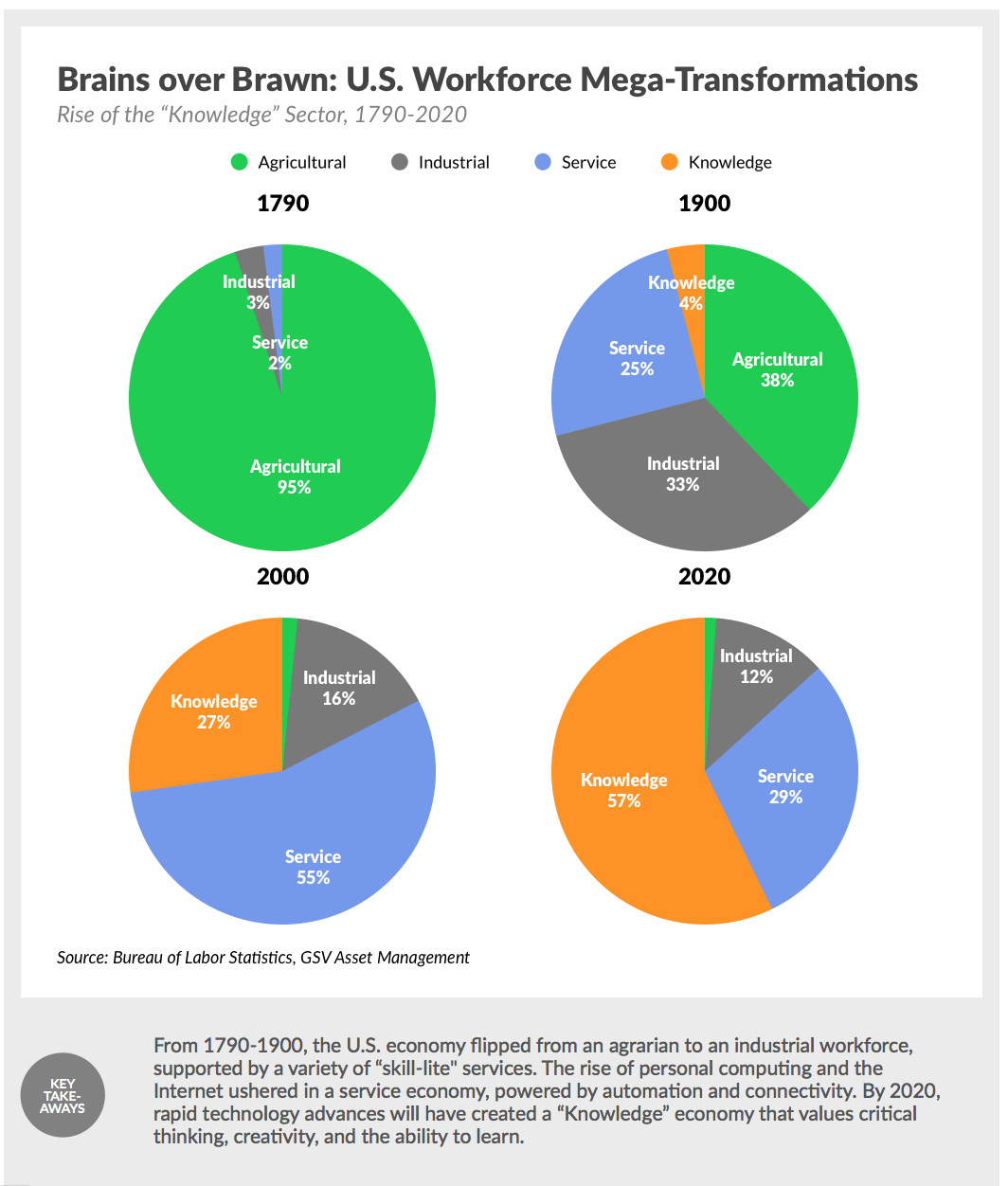
Our “modern” education system was designed in the early 1900s to produce predictable talent for process-driven work, from factory floors to the massive bureaucracies that supported industrial corporate titans. In this model, you learned until age 25 and then transitioned to a predictable career.
But in an era of globalization and technology automation, career obsolescence is the new normal. Oxford researchers have projected that 47% of American jobs are at “high risk” of being automated in the next 20 years. McKinsey estimates that 12 million U.S. “middle skill” jobs will be eliminated by 2025. Globally, there are over 350 million manufacturing and warehouse workers — roles that are rapidly being replaced as companies like Amazon, which already “employs” 30,000 warehouse robots, seek low-cost, high-efficiency alternatives to human labor.
Kaizen is a Japanese business term meaning “continuous improvement.” An education corollary is GSV’s concept of “KaizenEDU,” which means “continuous learning.” Hard work and a college degree are the minimum price of admission in the Global Knowledge Economy. But in a rapidly changing World, you can no longer fill up your “knowledge tank” until age 25 and cruise through life. Effective workers must refill their knowledge tanks continuously.
The same dynamics that have paved the way for disruptive global businesses to launch at lightening speeds — from Uber, which is upending the transportation industry, to Airbnb, which is redefining the hotel industry — are now propelling a new generation of rapidly scaling education and talent companies. We call these platforms “Weapons of Mass Instruction” because they are increasingly enabling people to learn anytime, anywhere.
Coursera (2015 Pioneer Summit Presenting Company), for example, is democratizing global access to high quality education. It partners with universities to provide best-in-class online courses in a freemium model, charging for certification of program completion. Founded in 2012, it already reaches more than 18 million students with 1,800+ courses created in conjunction with 140+ university partners. (Disclosure: GSV owns shares in Coursera)
The Pioneer Summit will focus on innovations in talent and education that reduce cost, improve quality, and broaden access.
3. SUSTAINABLE WORLD
How will our 7 billion and growing global population live happy, healthy, and prosperous lives while preserving the planet?
The good news is that the world’s middle class will more than double to five billion over the next 15 years. The bad news is that the strain this will put on the environment will be extreme, with wealthier people traveling more, consuming more, and using more electricity for everything — from air conditioning to lighting larger homes.
The World has never witnessed income growth at this speed or magnitude. China and India, for example, are doubling their real per capita incomes at 10 times the pace of England during the Industrial Revolution and 200 times the scale.
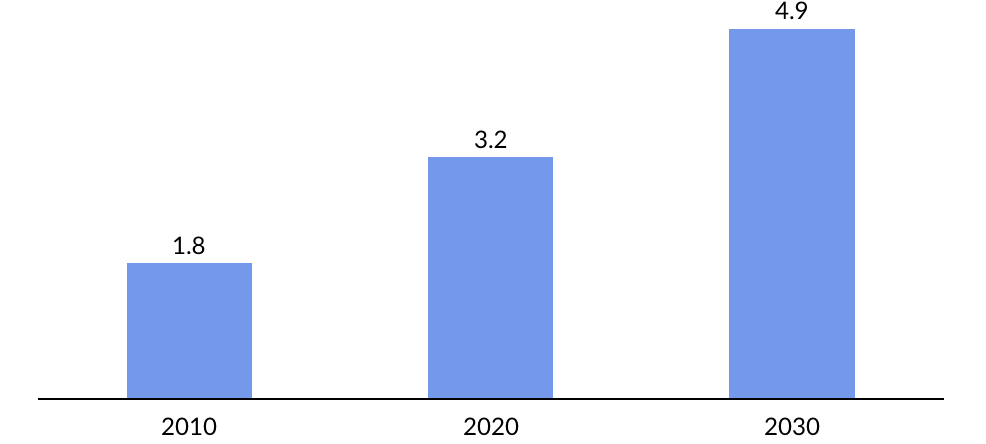
Defined as households that spend between $10 and $100 per day, the Middle Class is a cohort of CONSUMERS. The American way of life — house(s), car(s), modern appliances, travel — has become the World’s gold standard for quality of life.
Unfortunately, our account with the Bank of Mother Nature is already overdrawn. Today, we are using 1.5 planets worth of resources to meet global consumption demands. In other words, it takes 1.5 years to replenish the resources we consume in a year. We will need another half of a planet to simply sustain the next generation.
Confronting these grand challenges means that we need to reimagine how we create, cultivate, and consume everything — from energy and food products to consumer goods, cars, and construction projects. We need to focus on innovation and big ideas, not incrementalism.
Importantly, “Sustainability” is about more than green technology. It’s about living a happier, healthier life. The fact that everybody can and should have their own genetic profile, for example, has profound implications for the future of personalized medicine and extending human life.
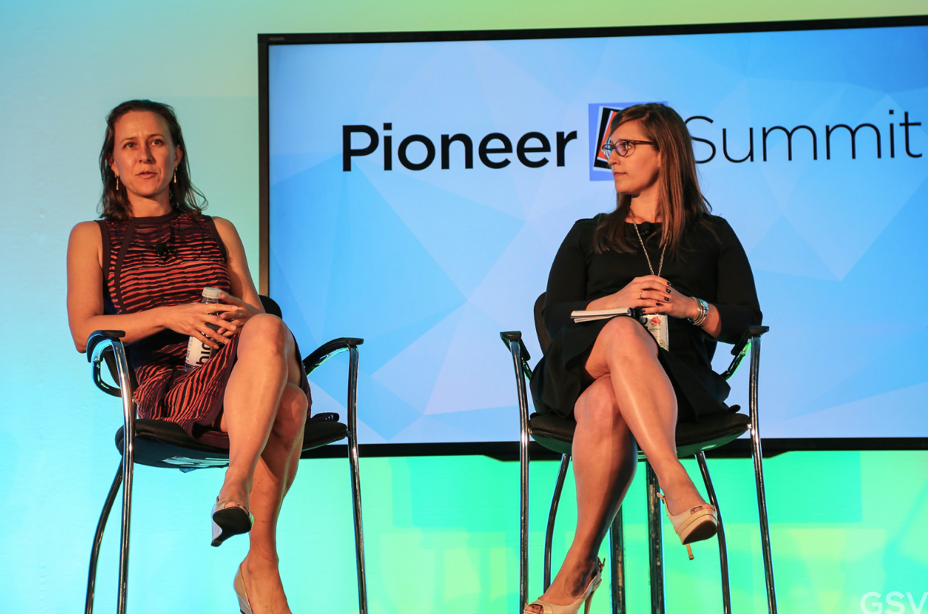
In 2003, it cost $3.8 billion to map out the human genome. Today, 23andMe (2015 Pioneer Summit Presenting Company) enables people to order a mini-map of their genetic make-up for $199. We are entering a new world where people can affordably live longer, smarter, and “greener” lives. We are on the verge of an era of sustainable living.
4. COMMERCE REIMAGINED
How will commerce and finance be transformed by new innovation fundamentals, including blockchain, digitalization, peer-to-peer marketplaces, and a mobile workforce?
Enabled by smartphone access and enhanced logistics, global e-commerce has been steadily growing. Yet while it is expected to surpass $2 trillion in 2016, e-commerce will still represent less than 9% of global retail spending.
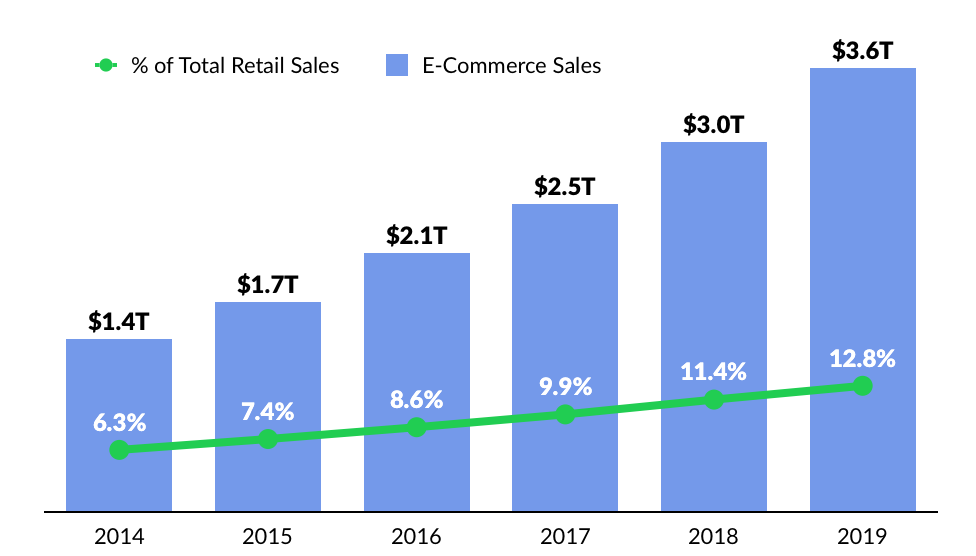
For participants in this market — old and new — growth has been fundamentally driven by logistics, not an expansion of products, offerings, or experiences. To date, this has been a market where you win on scale and efficiency — think Amazon, eBay, and Alibaba.
But if you look at the world of physical stores, many compete on service — the customer experience — not just efficiency. For every Best Buy, there is an Apple store. For every Target, there’s a Nordstrom. The next wave of digital commerce will bring a renewed focus on combining efficiency with a superior personal experience.
COMMERCE EVOLUTION: DIGITAL EXPERIENCE IS THE NEXT FRONTIER

Enjoy (2015 Pioneer Summit Presenting Company), co-founded by former Apple retail head Ron Johnson, is at the forefront of this trend. It’s a personal commerce platform built to revolutionize the way people buy and experience the World’s best technology products — from smartphones to wireless sound-systems and drones. The central feature of the company is hand-delivery of every item within 2-3 hours, including product set-up by an Enjoy expert. Effectively, Enjoy is Uber-meets-Apple Genius Bar. (Disclosure: GSV owns share in Enjoy)
The magic is in the experience Enjoy delivers. Efficient, on-demand delivery is table stakes. Enjoy experts meet customers at a time and place of their choosing, arriving early 97% of the time. Delivery is free and the product prices are the same or less than Amazon, Best Buy, or the Apple store.
How does it work? Enjoy doesn’t build stores. It hires great people. Enjoy can deploy a team of highly trained, engaging product experts a lot less expensively than building a physical storefront. Effectively, it works off the same margins as a physical store, but with a different model.
Ultimately, Enjoy is part of a trend where companies will increasingly focus on creating a delightful experience for people that make digital purchases. In this respect, popular, emerging consumer businesses like SoulCycle are kindred spirits.
There is nothing about what SoulCycle does that can be patented. The casual observer might even mistake it for a “spinning class.” But when you study SoulCycle, you realize that its monster success derives from doing a hundred little things better than anybody else.
Fundamentally, SoulCycle is a digital commerce platform. You go on your phone. You pick your class, your bike, your instructor, and your session time. Mobile payments are fully integrated. And then you show up and have a delightful experience. The instructors are trained to be both inspirational and aspirational. The music is perfectly choreographed. Despite the heavy sweat, SoulCycle studios sparkle and smell fresh.
The Pioneer Summit will explore how an emphasis on experience, as well as a variety of technology and business model innovations, are shaping the future of commerce.
5. MOONSHOT IDEAS
How will humanity explore the next frontier using drones, rockets, hyperloop pods, supersonic jets, and ultimately, our imaginations?
While all of the entrepreneurs at the Pioneer Summit are bold and ambitious, some of them are taking on especially challenging moonshot ideas. These companies work in regulated industries, compete against stagnant incumbents, and solve difficult, technical challenges. But these companies have the opportunity to fundamentally reshape the world and beyond.
One literal “moonshot” industry that the Pioneer Summit will cover is space. Until recently, the rule with rockets has been that what goes up usually comes down in pieces. The cost of getting anything into orbit — from satellites to people and supplies — has routinely cost upwards of $250 million per launch because expensive rockets are used once before falling from the sky like confetti. It would be like having a commercial aviation industry where planes were flown once and then discarded — not exactly cost efficient or scalable.
Elon Musk’s SpaceX and Jeff Bezos-backed Blue Origin are shattering the old paradigm by making rocket reusability a reality. In April, Blue Origin successfully landed its New Shepard rocket, its third successful test flight in less than five months. This week, SpaceX landed a rocket on a robotic barge nicknamed “Of Course I Still Love You” off the coast of Florida, its second successful landing in five weeks.
The personal computer paved the way for a new category of software companies. Affordable computing infrastructure like Amazon Web Services (AWS) spawned scores of cloud applications. Today, reusable rockets are poised to drive down cost and catalyze a variety of space “applications” — from travel to satellite-enabled logistics, business intelligence, and security.
An extension of this trend is the rise of Nanosatellites, or or “Nanosats”. Ranging from the size of a shoebox to a refrigerator, Nanosats are significantly smaller and affordable than traditional satellites. In the next twelve months, Planet Labs (2015 Pioneer Summit Presenting Company) will have deployed 150 Nanosats (“Doves” in Planet Labs vernacular), the largest fleet of Earth imaging satellites in the market — among private companies and government agencies alike.
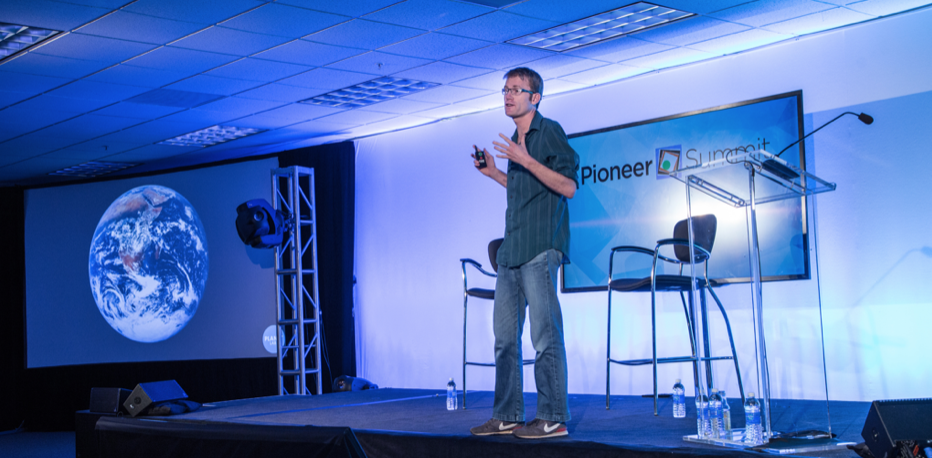
The applications for new troves of imaging information from Space are wide-ranging. Planet Labs, which produced the first set of daily, global earth images, is generating 370,000 images and 11 terabytes of data per day. Weather services can utilize sensors on Nanosats to gather better data and provide a clearer picture of climate patterns. Governments agencies can analyze imagery to monitor deforestation and environmental impact over time.
Until recently, it was possible to track a UPS truck to a city block, but cargo ships carrying millions of dollars worth of goods remained elusive. Spire (2015 Pioneer Summit Presenting Company) is dramatically improving global supply chain management by using satellite imaging to eradicate the “data dead zones” that exist across the Earth’s oceans.
We’re just scratching the surface and we hope you will join us at the 2016 GSV Pioneer Summit to explore our wildest frontier together.



